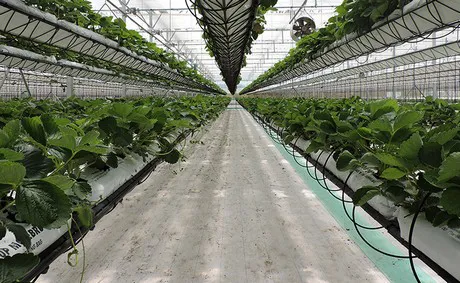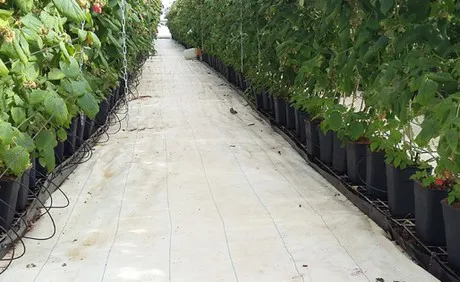As an answer to the growing global berry market, greenhouse manufacturers and solutions providers are increasingly looking at developing new production systems to maximize the efficiency of hydroponic berry production.
This was also the reason for Spanish greenhouse manufacturer J.Huete to take a closer look at new opportunities for berry cultivation gutter systems and designs. Analyzing various production systems, greenhouse settings and cropping situations, there are a wide range of different systems, all with the philosophy and objective to maximize the efficiency, no matter what kind of situation. As not every berry crop is the same, each situation, location and project requires a different approach.
For strawberry crops, which are responsible for the largest product category in the berry range, a number of systems are available. Aside of traditional low placed crops on ground gutter systems, here are four of the most commonly used raised systems in greenhouses.
1. The traditional elevated system, with the crops and their gutter fixed on poles. Production height varies between 100 and 120 centimeters and the fixed space between the gutters is approximately 100 cm.
2. The hanging system. Also here the fixed space between the gutters is about 100 cm, only in this case the gutters are hung in trellis system that is attactehd to the greenhouse structure. The advantage of this raised system is the ease of installation, and moreover the uniformity of the slope and drainage gradient. Another advantage is that the ground is completely free of obstacles, allowing easy cleaning and ground cover replacements.
3. A more progressive set up is the swing system. In this situation the space between the crop rows can be adjusted. It allows to space out the gutters from 80 com to up to 100 centimeters, allowing workers to pass through and access the crops when needed. The main advantage of such a system is that the amount of crops per square meter can be increased and less production space is required.
In order to determine the system of your choice, it is always advised to make a critical analysis of the parameters present. A gutter system first of all needs to enable a correct drainage and evacuation of the excess irrigation water, as well as providing a good aeration of the root systems, while still preventing the plants from getting their feet to wet.
In the shrub stages of crops like raspberry, blackberry and blueberry the production system is different, but always with the same technical base and the same objectives as the strawberry systems. In this case, a floor system can be used, such as the gutter with spacer, on which pots, containers, bags of culture, etc can be placed.
For more information on any of these system:
J.Huete International
Leonardo Juarez - Export Manager




